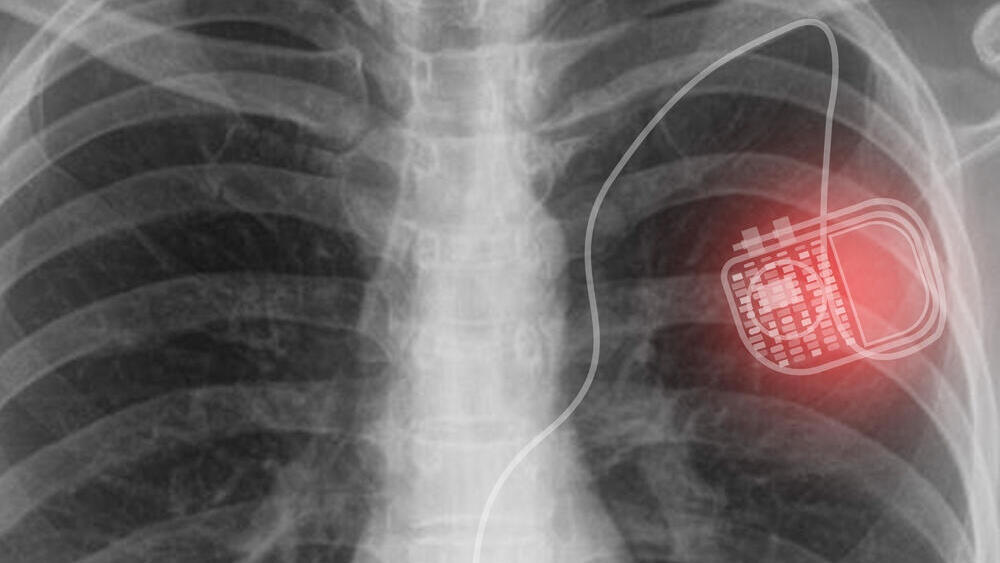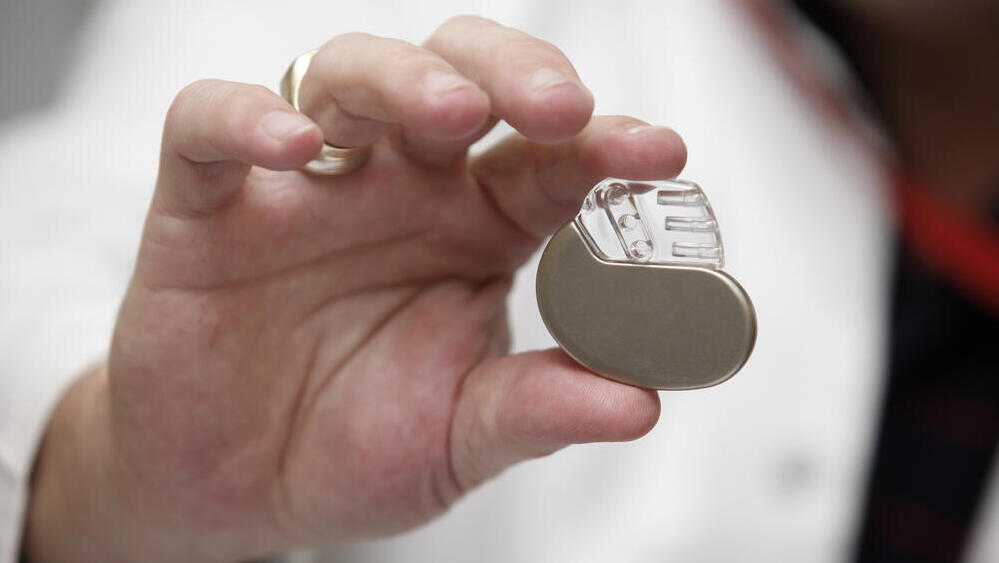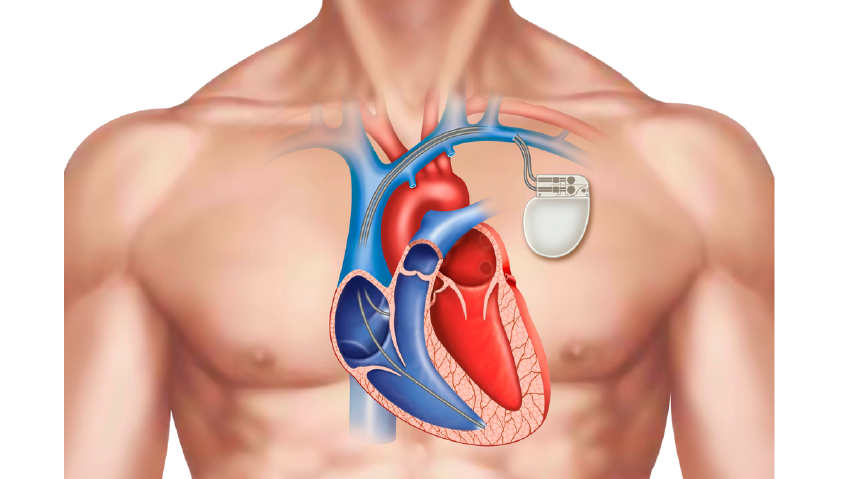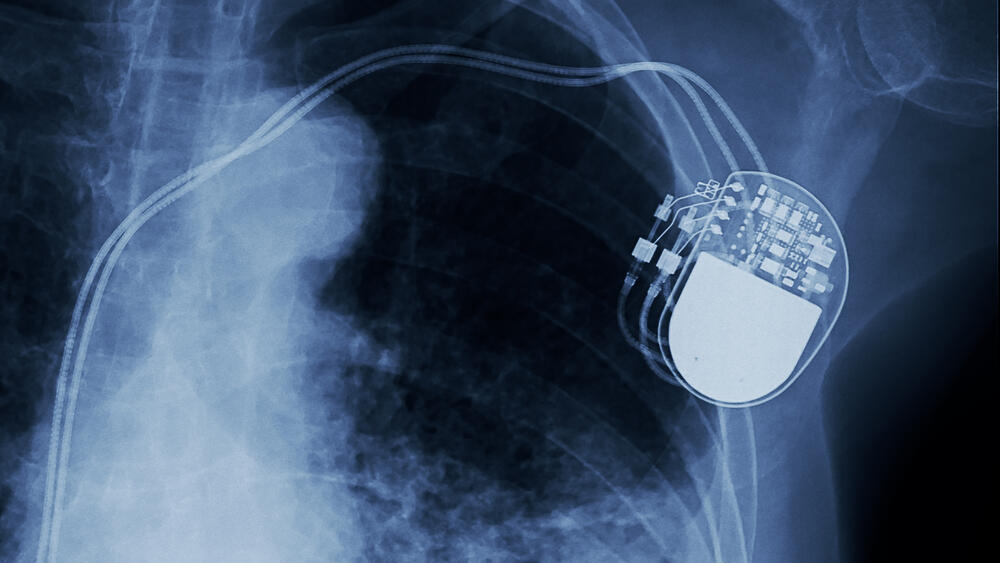Getting your Trinity Audio player ready...
Prime Minister Benjamin Netanyahu underwent a heart pacemaker implantation overnight Saturday at Sheba Medical Center, a week after being hospitalized for his cardiac conduction causing him to lose consciousness.
More stories:
Netanyahu was released from the hospital at the time after a heart-rate monitoring device was implanted in his body, and after that device indicated there was once again an irregularity in his cardiac functions, he was hospitalized again to quickly be surgically attached to a pacemaker.
"During the night, Netanyahu’s Holter alerted doctors to a heart rhythm disturbance. Based on his physicians’ recommendation, it was decided to implant a pacemaker in his heart,” the Sheba Medical Center said in a statement. “The procedure was completed successfully and without further complications. Netanyahu’s medical condition is good, and he will remain under supervision in Sheba Medical Center’s Cardiology Department.” There was no indication as to how long he would remain in hospital.
Why did Netanyahu require a pacemaker?
"We identified a temporary heart rhythm disturbance in Netanyahu’s heart on Saturday, and so urgently admitted him to the hospital for a heart pacemaker implantation,” Prof. Beinart said. “The procedure was performed without any complications. He’s not in a life-threatening condition, he’s feeling well and is resuming his daily routine," he added.
"A week ago, I was implanted with a heart rate monitoring device. The device beeped and said I needed a pacemaker, that will be implanted tonight," Netanyahu said in a post on social media, before the procedure.
The prime minister was previously reported to be suffering from a cardiac disorder that causes heart rhythm disturbances. The incident last week raised concerns that the condition caused his heart rate to slow, and prevented sufficient oxygenated blood from reaching his brain.
When the brain is deprived of oxygenated blood for seven seconds, it causes loss of consciousness. If the brain doesn't receive oxygenated blood for four minutes, irreversible brain damage occurs.
The Holter device, to which Netanyahu was connected, detected the disorder, likely leading doctors to decide to implant the pacemaker to detect further conduction slowdown and "complete" the electrical signals through artificial means (using a pacer).
What is a pacemaker?
A pacemaker is a small battery-operated device designed to deliver electrical signals to ensure the heart rate is not too slow. It is implanted under the patient's skin near the collarbone.
How is a pacemaker built?
The implanted pacemaker is about the size of a small car lock, and contains a battery that lasts for 5 to 15 years. The pacemaker has electrodes that extend to the heart's atrium, ventricle, or both.
It continuously monitors the heart rate, and when a drop is detected, the pacemaker sends the electrical pulses required to maintain a proper heart rate.
How is the procedure performed?
The procedure is relatively short and takes about two hours under local anesthesia, often combined with a sedative. The doctor makes a small incision under the chest bone and creates a pocket where the pacemaker is placed. The electrodes that extend from the pacemaker are inserted into the nearby veins leading to the heart itself. The procedure is guided by X-ray fluoroscopy, which helps the doctor see the pacemaker’s placement and tests are conducted to ensure that the pacemaker and electrodes are positioned correctly.
Is the procedure complex?
"Many elderly people undergo pacemaker implantation. The procedure isn’t simple Dr. Aharon Medina, head of Shamir Medical Center’s Electrophysiology Department, said.
But Netanyahu claimed he went to the hospital after suffering from dehydration.
"I assume that due to the circumstances he described, doctors suspected that the reason for his loss of consciousness was dehydration, which was later revealed as an incorrect diagnosis,” he said adding that the reason for the prime minister passing out was most likely due to a few missed heartbeats, caused by his condition. "His heart-rate monitor later alerted doctors to his condition, prompting the procedure carried out overnight.”
What follow-up visits will Netanyahu need?
“About a week after surgery, the patient undergoes a check-up to ensure the surgical wound appears normal and is not bleeding or infected. Then, Netanyahu will continue follow-up visits with a cardiologist, once every six months, to verify that the pacemaker is functioning properly and that the its battery (which is supposed to last for years) is still full," Dr. Medina said. “The cardiologist can also reprogram the pacemaker according to the required heart rate needed to fit Netanyahu's lifestyle.”
How is the pacemaker's battery replaced?
“After 10 years or so, the battery is replaced in a small procedure under local anesthesia. The battery is replaced, sometimes while fitting a new and upgraded pacemaker, and is returned to the body.”
Does a pacemaker have an effect on daily life?
“The device isn’t expected to have a significant impact on Netanyahu,” he explained. "Recovery is quick because the procedure isn’t very invasive. The damage done to the body is minimal, with a small incision in the upper left chest area where wires are inserted. This allows for a fast-healing process.”
“However, the pacemaker needs some time for the body to create inflammatory reactions that secure the wires in place. If someone undergoes a pacemaker implantation procedure and immediately goes out for a run, the electrodes may dislodge, nullifying the surgery’s effects,” he said.
"We recommend every patient that undergoes the procedure will rest for several days and avoid strenuous exercise."
Localized pain is expected in the first few days after the surgery, and can be treated with painkillers. Antibiotics are often added to prevent infections. The pacemaker doesn’t interfere with returning to a daily routine, but the patient is requested not to stretch his left arm to avoid pulling the electrodes from place.
Swimming is generally discouraged, and assistance in dressing and undressing is advised, to prevent arm movements. Lifting heavy objects of more than 10 kg should be avoided as well. Additionally, it’s recommended to keep the mobile phone away from the left side of the body close to the pacemaker.






